A project’s audience is very diverse but if it has a payment option then, obviously, you can divide all the users into two categories: paying and non-paying.
Their behavior in a product often varies not only on the presence or absence of payments but also on other behavioral metrics.
We usually divide paying users into several types (categories) and in this article, we are going to talk about them.
Segmentation based on total payments
Based on the amount of money spent, we can divide all paying users into three conventional types:
-
Whales
-
Dolphins
-
Minnows
We at devtodev have added two more types for detailing - Grand Whales and Grand Dolphins.
Whales are the users who spend large sums of money in the game. They compose a small proportion of all users, but they generate the most revenue.
Dolphins are mid-range spenders and minnows pay the least, and their share in the income is insignificant and out of proportion with their number.
You can take our free online course on Game Analytics (from Basics to Advanced Strategies)
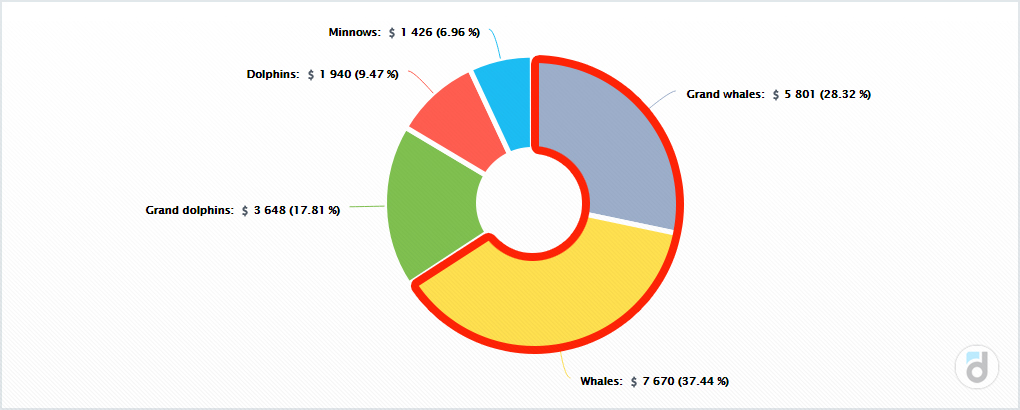
We can divide users into these types using certain methods. The first one, which we use at devtodev, is quintile allocation, in other words, distributing selection values into several specified parts. To do this, we need to sort all the users in descending order with respect to income, and then take the top 1% (grand whales), then 2 - 10% (whales), 11 - 25% (grand dolphins) and so on.
Read more: Main Metrics. Churn Rate
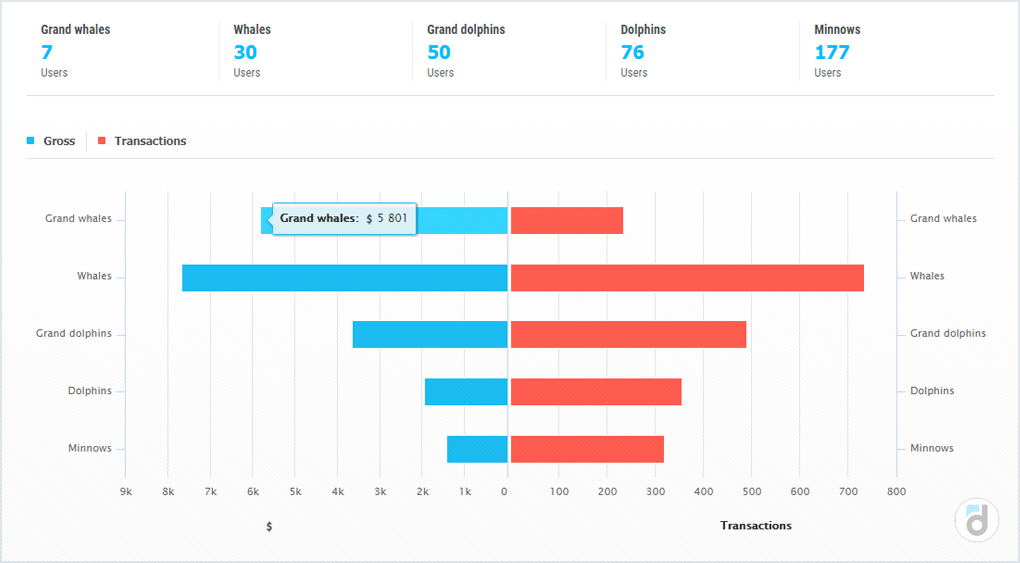
Here is an example of how you can segment using his method:
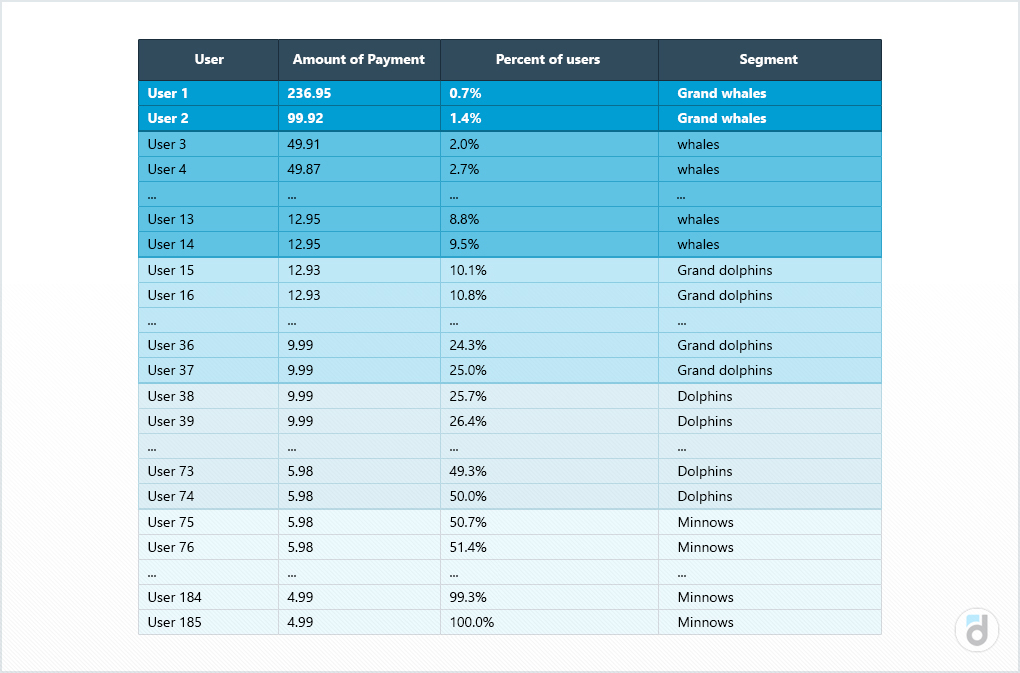
Another method of audience segmentation is using your expertise for drawing a border between them. For example, you can decide that users paying $1000 and more are whales, $100 – $999 are dolphins and so on. This method is more simple if you have a good understanding of your application and users.
As we have said earlier, users from different segments often behave differently in the app. For example, whales retention is often higher than in other segments, but they take more time from the installation to the first payment. Nevertheless, this segment brings the most revenue. That’s why it is important to have whales in the product and try to maintain their activity to stop them from leaving the project. And if you want to have whales in the first place, you need to create unique valuable and expensive content for those who can pay large sums of money.
Read more: Main Metrics. Active Users (DAU, WAU, MAU)
Audience segmentation based on the number of payments
The second user segmentation method is based on the number of payments. But here it is even more important to divide users into those who made one payment and those who made repeat payments because the second group often brings good and stable income.
You can take a look at the audience from the point of view of payments they made:
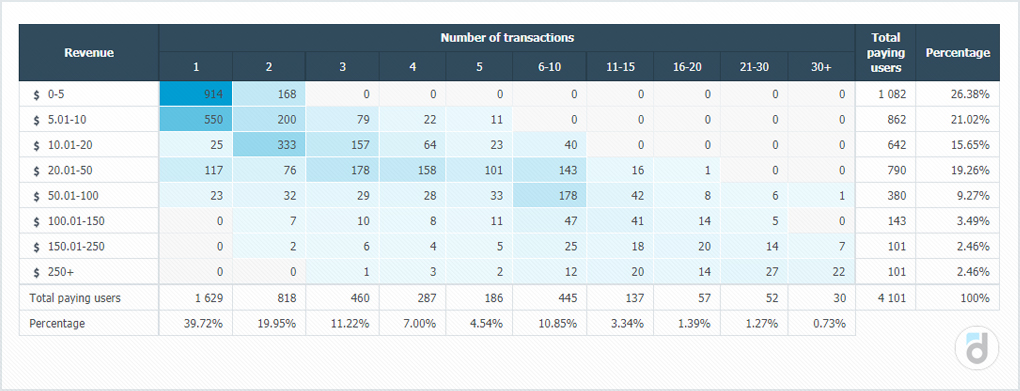
Users should crowd in the right bottom corner. It signals that a lot of payments are repeat and large.
Read more: Main Metrics. ROI
Segmentation based on time of payment
Users make their first payment at various times throughout their life in the project. If you know how most people behave, then you can plan promotions on the part of the audience behaving differently.
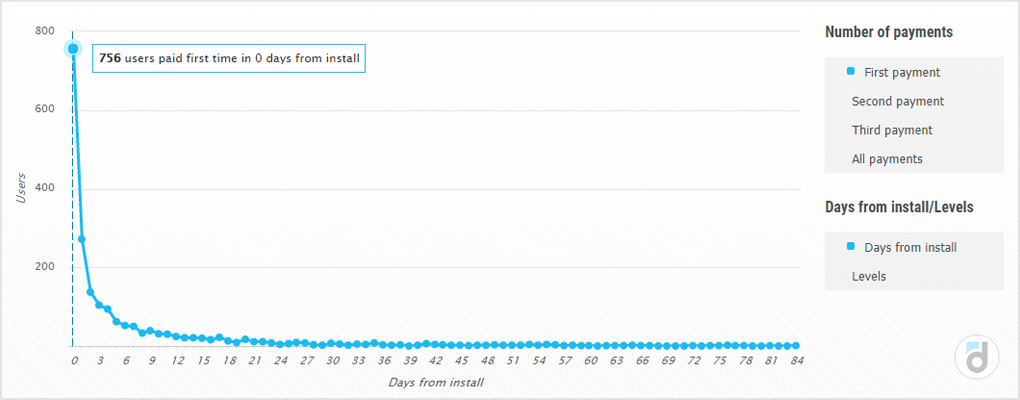
For example, if most users start paying on the first day after the app installation, you can try to motivate the rest of them to pay from day two.
The audience segmentation on the time of payment focuses on new users (and first payments in general) and points at their conversion speed.
From a report on this metric you may find out that, for example, the vast majority of new users get converted on their first day in the project.
Read more: 25 Things that Analysts Hate
Segmentation based on the time from installation
This segmentation describes the composition of income and makes clear what kind of users bring the largest part of it.
From a report on this metric can find out, for example, that new users compose 2% of the income, but most of it is generated by users who installed the app 6 months ago.
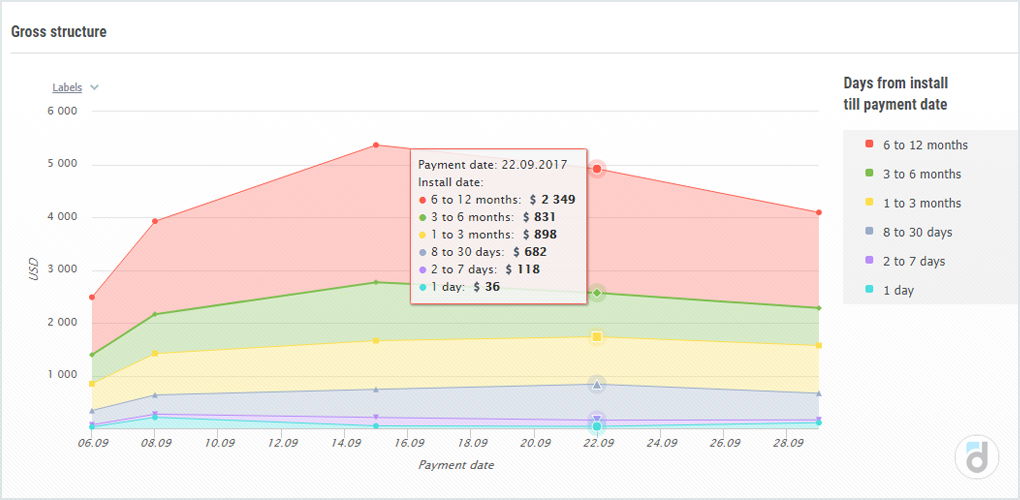
After reading this report you can understand which users bring the most income to your project and what segment causes your income to grow or to fall.
This type of audience segmentation can be useful for planning different changes and experiments for a certain segment and also for new release evaluation: how exactly it influenced this or that user segment. For example, it may happen that new users, who were not familiar with the app earlier, will keep on paying, but those who are in the project for a long time, will become displeased with the changes and this will negatively impact the income from this segment.
Read more: Game Analytics Metrics
Although users who pay and pay a lot are the most valuable, for any game it is important to have all user segments because they together create an ecosystem that is necessary for the existence of the project as a product.

